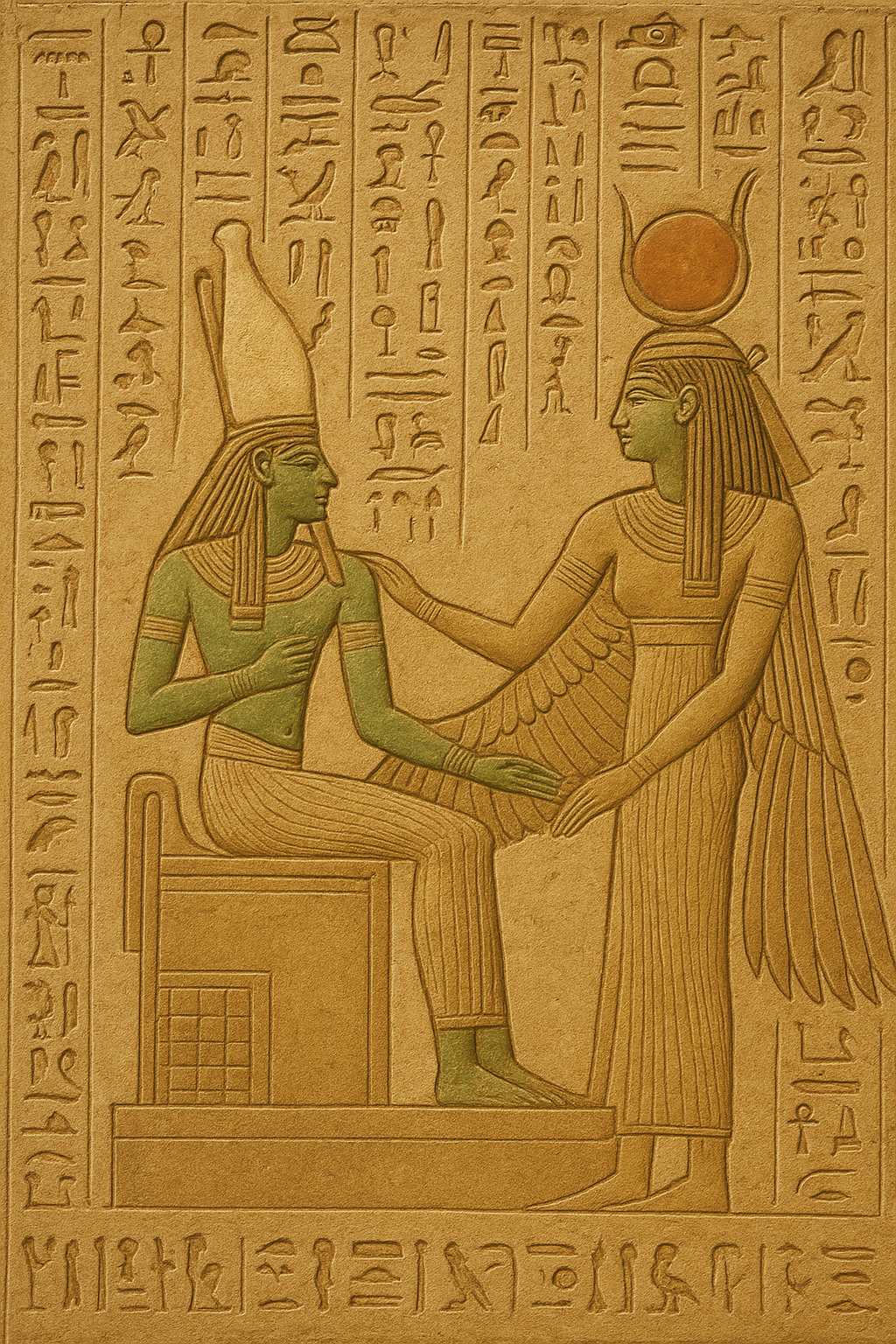So Set devised a cunning trap. He commissioned a magnificent box, built to Osiris’s exact measurements. At a great banquet filled with music, wine, and laughter, Set declared that the box would be a gift to whomever fit it perfectly. One by one, his companions tried, but all were too short or too tall. Finally, Osiris was persuaded to lie down inside. At once the lid was slammed shut, sealed with molten lead, and the chest was flung into the Nile.
With Osiris gone, Set crowned himself king. His reign was the opposite of Osiris’s golden age — harsh, cruel, and joyless.
The mourning of Isis
When Isis learned what had happened, her grief was unmeasurable. She set out on a long journey to recover Osiris. The chest had floated downriver and lodged in a great tree, which grew around it. By the time she found it, Osiris was dead.
But Set’s malice was not yet satisfied. Discovering that Isis had reclaimed the body, he stole it from her and hacked it into fourteen pieces, scattering them across Egypt. One part was lost forever — Osiris’s phallus, devoured by a fish in the Nile. Egyptians, remembering this myth, regard that fish as taboo – forbidden and never eat it.
🧳 Insider Travel Tips – Navigate Egypt with Confidence 🧳
Magic, rebirth, and Horus
Undaunted, Isis searched again. With the help of her sister Nephthys, she gathered every fragment of Osiris she could find. She reassembled his body, replacing the missing part with a model made from clay. Then, calling upon her own powers and Heka magic, Isis transformed into a bird and breathed life into Osiris for a brief moment. In that moment she conceived a child — Horus, the falcon god.
To protect her son from Set, Isis fled to the island of Philae near Aswan, where she hid until Horus grew strong enough to challenge his uncle. But probably the best place to see this story on the temple walls is at Edfu.
The gods and their powers
- Osiris (Ausar): Lord of the Underworld, symbol of death, rebirth, and the eternal cycle of life.
- Isis: Goddess of love, beauty, and magic — the creative female power.
- Set: God of chaos, violence, and opposition. T he same Set who appears in later royal narratives, including the reign of Ramesses III, showing how deeply his presence haunted Egyptian thought.
- Nephthys (Nebt-het): The silent protectress of the dead.
- Anubis: Guardian of embalming, guide of souls on their journey through the afterlife.
Where to see the gods
If you want to see the most vivid and colourful depictions of Nut, Isis, Osiris, and the other gods, there is no better place than Dendera Temple. The ceilings and walls there are alive with brilliantly preserved images, their colours still vibrant after two thousand years.
👉 If you’d like to explore stories like this, with Mara in Egypt itself, you’ll find my personal tours here: Egypt tours with Mara House Luxor.
📜 Egypt’s Stories Unveiled – Dive into my collection at History & Culture 📜

